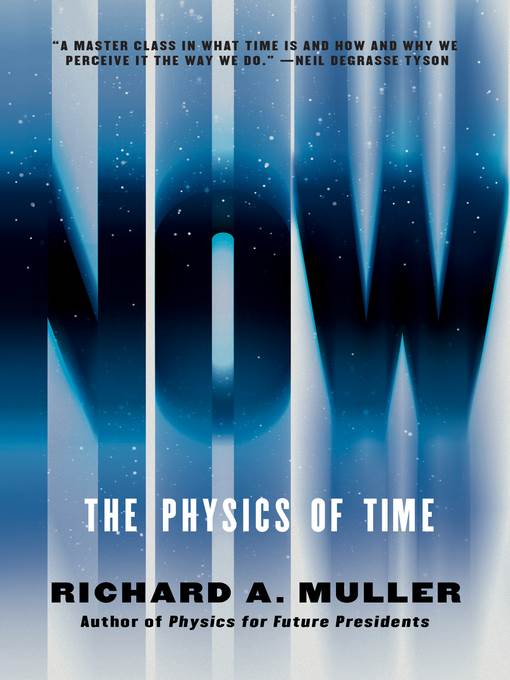
Now
The Physics of Time
کتاب های مرتبط
- اطلاعات
- نقد و بررسی
- دیدگاه کاربران
نقد و بررسی

July 4, 2016
Muller (Physics for Future Presidents), professor of physics at the UC Berkeley, looks anew at the physics of time in this provocative book. Scientists have puzzled over a definition of now for centuries. Einstein’s relativity theory showed that time is dependent on the observer’s frame of reference, but the news that the speed of light is constant for all observers also removed any hopes of the existence of universal simultaneity. Even more intriguing, relativity showed that time actually slows for moving objects, giving life to a host of paradoxes. Muller addresses the largest question—can the “arrow” of time go forward only?—by giving readers a closer look at the nature of entropy and how it has increased since the Big Bang. But the discovery of the Higgs boson opened up the possibility that entropy isn’t driving the forward march of time. Quantum physics may yet yield a “quantum arrow” to time, Muller says, based by work by Richard Feynman and others. With a little help from such pop culture touchstones as Star Trek, Jurassic Park, and Calvin and Hobbes, Muller delivers an intriguing glimpse at the physics behind time.

July 1, 2016
Educated readers know that time is one of four dimensions, but most can't shake the feeling that it's the odd man out. They will enjoy this popular account of "an extremely simple yet fascinating and mysterious concept."Muller (Physics/Univ. of California; Energy for Future Presidents: The Science Behind the Headlines, 2012, etc.) frequently quarrels with earlier popular accounts, disobeys the taboo on mathematics, and concludes that time is even odder than once imagined. One peculiarity is that, unlike length, width, and depth, time moves. "We can stand still in space but not in time," writes the author. "We move in time but have no control over that movement--unless, of course, time travel proves possible." Musing about time since the dawn of history, philosophers concluded that it was absolute and inexplicable. Early physicists, Newton included, did not disagree until Einstein, Muller's hero, came along with his revolutionary theories. Using ingenious insight and simple mathematics, his special relativity proved that time is flexible, stretchable, and perhaps even reversible. Using complicated mathematics in general relativity, he proved that it is bound up with gravity, which is not a force but a consequence of the distortion of space--really, spacetime--by the uneven distribution of mass in the universe. Muller admits that time is so bound up with gravity and space that one cannot discuss them in isolation, so his book turns out to be a history of the universe beginning at the Big Bang and ending at today's mysteries (dark energy, quantum gravity, string theory), with detours into current explanations (mostly wrong, in his opinion) of time. Not for the faint of heart or mathematically averse, but Muller is a masterful guide within this survey of cosmology.
COPYRIGHT(2016) Kirkus Reviews, ALL RIGHTS RESERVED.

August 1, 2016
Muller (physics, Univ. of California, Berkeley; Physics for Future Presidents: The Science Behind the Headlines) spends much of his book debunking the "arrow of time" theory and reassuring readers that physics cannot explain everything. These are not concerns that average readers are aware of or worry about, and this title is obviously intended for those who have studied physics before, preferably at the college level. The first section tackles relativity in a way that will trigger the memories of former (or current) physics students but is unsatisfying to nonexperts. Overreliance on equations is not to blame, however. Indeed, later sections with more math are actually better explained. It is unclear how individual chapters are related to one another or the main topic. Attempts to discuss philosophy, religion, and free will are disorienting and unhelpful, as are references to the author's own work and the many Nobel Prize winners he has known. VERDICT This volume is best for those who are already familiar with physics and who want to jump straight into the problem of studying time. Novices would do better to read some of the works of Neil deGrasse Tyson, such as Death by Black Hole: And Other Cosmic Quandaries.--Cate Hirschbiel, Iwasaki Lib., Emerson Coll., Boston
Copyright 2016 Library Journal, LLC Used with permission.

























دیدگاه کاربران